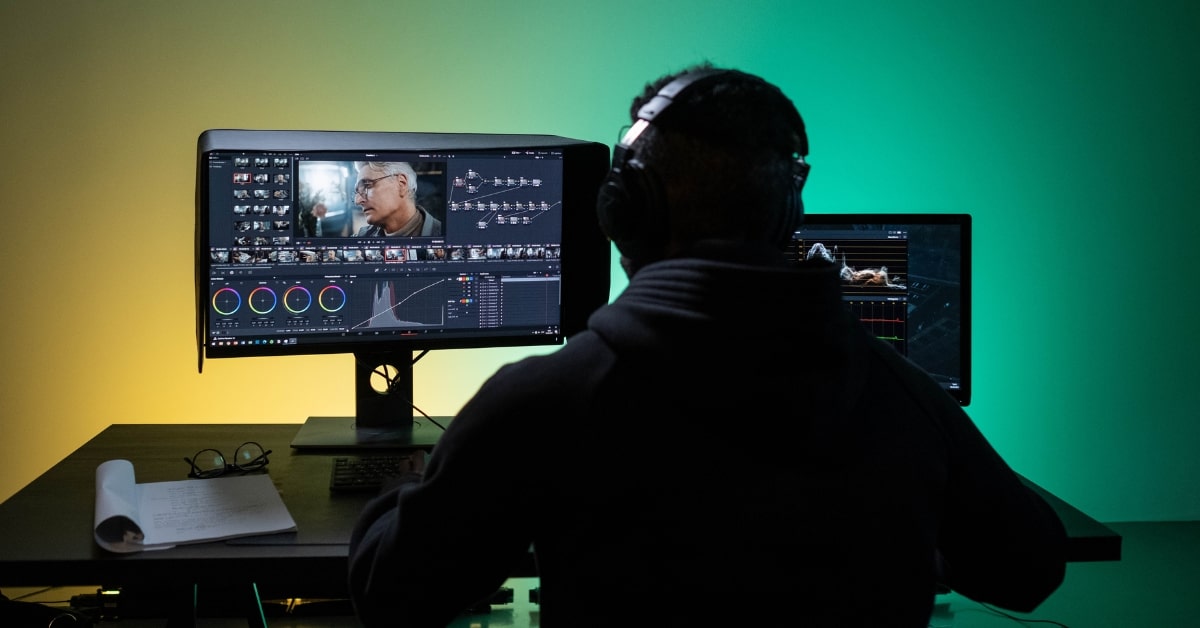In the dynamic world of visual storytelling, video editing stands as a transformative art, turning raw footage into captivating narratives. The diverse range of video editing services available caters to various needs, from professional filmmaking to personal content creation. This article delves into the different types of video editing services, shedding light on their unique features and applications.
1. Basic Video Editing:
- Scope: Simple cuts, trims, and arrangement of footage.
- Use Cases: Ideal for personal vlogs, basic video content, or casual social media posts.
2. Professional Video Editing:
- Scope: In-depth editing with a focus on storytelling, pacing, and overall narrative flow.
- Use Cases: Suited for corporate videos, documentaries, and high-quality YouTube content.
3. Color Grading:
- Scope: Enhancement of colors, tones, and overall visual aesthetics.
- Use Cases: Elevates the cinematic look of videos, often used in films, commercials, and music videos.
4. Audio Editing:
- Scope: Manipulation of audio elements, including music, dialogue, and sound effects.
- Use Cases: Ensures clear, balanced audio in videos, commonly applied in interviews, podcasts, and music videos.
5. Motion Graphics and Animation:
- Scope: Integration of animated elements, text, and graphics into videos.
- Use Cases: Enhances visual appeal, used in explainer videos, promotional content, and title sequences.
6. Visual Effects (VFX):
- Scope: Incorporation of computer-generated imagery (CGI) and advanced effects.
- Use Cases: Applied in films, TV shows, and commercials to create fantastical or unreal scenarios.
7. Green Screen Editing:
- Scope: Removal of the background and replacement with a different image or video.
- Use Cases: Commonly used in news broadcasting, weather reports, and creating virtual environments.
8. 360-Degree Video Editing:
- Scope: Editing immersive, 360-degree footage.
- Use Cases: Utilized in virtual reality (VR) experiences, travel videos, and interactive storytelling.
9. Social Media Video Editing:
- Scope: Tailoring content for specific social media platforms, considering aspect ratios and engagement trends.
- Use Cases: Ensures optimized content for platforms like Instagram, TikTok, and Facebook.
10. Drone Video Editing:
- Scope: Editing footage captured by drones, often requiring stabilization and color correction.
- Use Cases: Popular in real estate, travel videos, and outdoor events.
FAQs
What is the difference between basic and professional video editing?
Basic editing involves simple cuts and trims, while professional editing includes a more comprehensive approach to storytelling, pacing, and overall production quality.
When is color grading necessary for video content?
Color grading is essential when aiming for a specific visual style or cinematic look in videos. It enhances colors, tones, and overall aesthetics.
How does audio editing contribute to video quality?
Audio editing ensures clear, balanced sound in videos, enhancing the overall viewing experience by eliminating background noise and ensuring clarity in dialogue.
What are motion graphics, and where are they commonly used?
Motion graphics involve animated elements, text, and graphics. They are commonly used in explainer videos, promotional content, and title sequences.
How is VFX different from other types of video editing services?
VFX involves the integration of CGI and advanced effects, creating elements that may not exist in reality. It goes beyond basic editing to produce fantastical or unreal scenarios.
What is green screen editing, and where is it applied?
Green screen editing involves removing the background and replacing it with a different image or video. It is commonly used in news broadcasting, weather reports, and creating virtual environments.
Why is 360-degree video editing important for virtual reality experiences?
360-degree video editing is crucial for creating immersive virtual reality experiences, allowing viewers to explore environments from different angles.
How does social media video editing differ from other types of editing?
Social media video editing tailors content for specific platforms, considering aspect ratios and engagement trends unique to each platform.
What challenges are involved in drone video editing?
Challenges in drone video editing may include stabilizing footage, color correction, and integrating aerial shots seamlessly with ground-level footage.
Why is specialized editing necessary for different types of videos?
Specialized editing ensures that the unique requirements and goals of each video type are met, resulting in content that is visually appealing and effective.
Conclusion
Understanding the diverse types of video editing services allows content creators to tailor their approach based on the specific needs of their projects. Whether it’s enhancing colors, creating visual effects, or optimizing content for social media, the array of editing services opens up a world of creative possibilities, ensuring that every video tells its story most compellingly.
This page was last edited on 24 February 2024, at 1:56 pm
